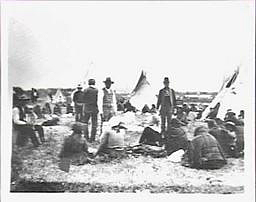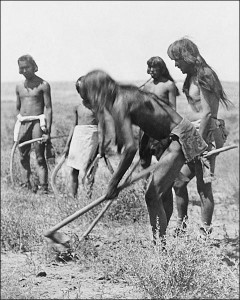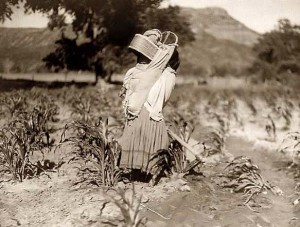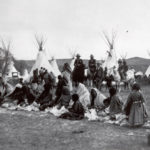
Issuing Flour to Ojibway Woman, White Earth Reservation, 1896, courtesy University of Minnesota, Duluth
As Native Americans were forced onto reservations, they were also forced to abandon their healthy diets of fresh meat and produce in favor of canned goods and poor-quality staples. Their experience has ultimately been echoed throughout the country as people nearly everywhere have drifted away from home-grown food in proper quantities and introduced processed and/or GM (genetically modified) food into into their diets.
Corn has been hybridized so much that it is no longer the same product that Native Americans and European immigrants ate; modern genetic modifications have made this food a poor nutritional choice. A study from the Permaculture Research Institute on non-GM corn and Roundup-Ready corn, found that the GM corn contained glyphosate and formaldehyde at toxic levels. This corn was also seriously deficient in nutrients: non-GM corn had over 6,000 ppm (parts per million) of calcium, while the GM corn had 14; other nutrient levels were similarly affected.
Native Americans and other concerned consumers are trying to introduce non-GM corn back into the food system. Heirloom varieties like White Flint Hominy (also known as Seneca Hominy or Ha-Go-Wa) are hundreds of years old; Ha-Go-Wa was recently harvested by tribal seed savers associated with the White Earth Reservation in Minnesota. Many heirloom varieties produce colorful, intensely flavorful corn–just not as abundantly as the hybridized type which replaced it.







